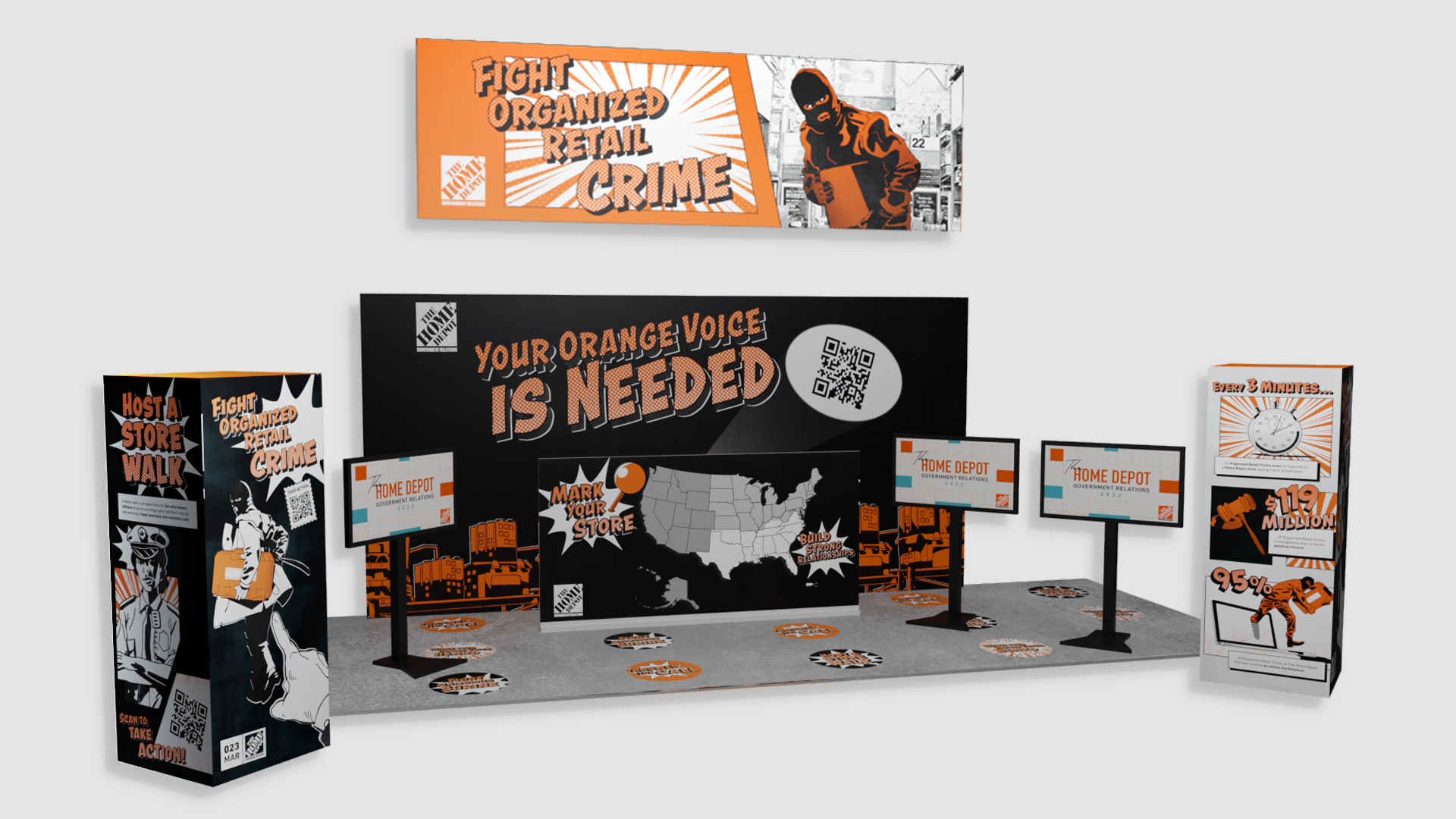Influence Policy Stakeholders With Virtual Reality and 3D Visualizations

Immersive technology is a powerful storytelling tool and a novel way to engage policy stakeholders. Advances in virtual and augmented reality, 3D modeling, and spatial computing can bring customizable scenarios to life, guiding audiences through a specific narrative so they can experience the journey from a different perspective.
Interactive environments with 360-degree sensory elements reduce distractions, capture attention, and create engaging experiences that have memorable impact. After all, the primary goal of public affairs campaigns is to help target audiences understand and empathize with a specific viewpoint. Now that immersive technology is more accessible, it’s one of the best ways to accomplish that objective.
Technological Advancements Power Immersive Experiences
Advancements in AI, machine learning, and hardware are powering faster, more accurate, and more accessible immersive experiences. Combined improvements in hardware and software accelerate data processing, making it possible to analyze physical space and pair it with high-resolution digital objects in real-time to deliver experiences that look incredibly compelling to the eye. At the same time, VR headsets and other devices are getting smaller and more intuitive to use.
Experiences are also becoming more personalized. For example, Apple’s new Vision Pro headset offers prescription lenses and a custom fit. It also uses eye tracking to adjust screen focus and prioritize pixel clarity for each individual’s pupils. These adaptations conserve processing power while allowing the user to see in incredible detail.
AI and machine learning also play a role in content creation, interpreting and predicting data as part of 3D scanning processes to generate realistic, detailed content. Smartphones can even be used to capture the detail required for these models. When the device conducts a 3D scan, it records data about the depth of objects, spatial references, and textures. AI and machine learning algorithms use this data to interpret the objects’ shapes. The technologies are constantly getting better at predicting data for areas in a scan that might not have been captured.
There are even AI-enabled websites that can generate low-resolution 3D models from written prompts, similar to AI image generators.

3D Mock-Up Created for a Home Depot Event Activation
Applications of Immersive Tech for Public Affairs Content
At NJI, we are using immersive technology and AI to quickly generate moodboards, visualize models, evolve concepts, and refine details before committing to production. Spatial computing with 3D modeled prototypes have helped us optimize out-of-home executions and studio set-ups for clients including The Home Depot, Intuit, and PhRMA.
Spatial computing is a relatively new term for headset-supported augmented experiences that integrate virtual and real-world elements. Users can see information, interact with digital 3D objects, and conduct computer-based operations in the physical space around them. For instance, users can interact with various application screens that appear as semi-transparent digital windows in their real-world space, the same way they would interact with applications on a computer or tablet.
“We can immerse clients in the experience within their existing environment, rather than seeing the traditional 2D rendering,” says Vice President of Interactive Media Ryan Raybould. “When clients put on the headsets, they can physically walk around and view objects at a real-world scale. This makes it much easier to get a sense of the proposal, evaluate the size and placement of signage and screens, and provide direct and informed feedback.”
Immersive technologies are also an excellent way to explain concepts that aren’t easy to capture with traditional media. For example, a car manufacturing company could use 3D models to educate policy stakeholders, or the general public, by isolating individual components of an engine, rotating them in space, and providing detail on their functions and enhancements. This model could also simulate certain scenarios to show how it performs in different conditions or under different loads.
Clients could also use 3D models to demonstrate complex infographics, clarify intricate processes, or guide audiences through a distinct journey from a specific perspective. For example, an organization seeking stronger safety requirements for firefighters could create an immersive experience that lets policymakers explore a virtual simulation of fighting a fire: seeing the flames, grappling with the weight of the hose, and feeling the heat as they try to extinguish the blaze. Immersive experiences like this can help to shift perspectives and empower stakeholders to make a more compelling case to their constituents.
We’re also continuing to explore virtual production techniques and motion capture to bring traditional video storytelling into these immersive environments in novel ways.
Immersive technology blends in-person and digital experiences to create deeper connections with complex topics. As the technology becomes more accurate, affordable, and accessible, immersive experiences offer a powerful tool for storytelling, revolutionizing the way we interact with content and engage audiences.

